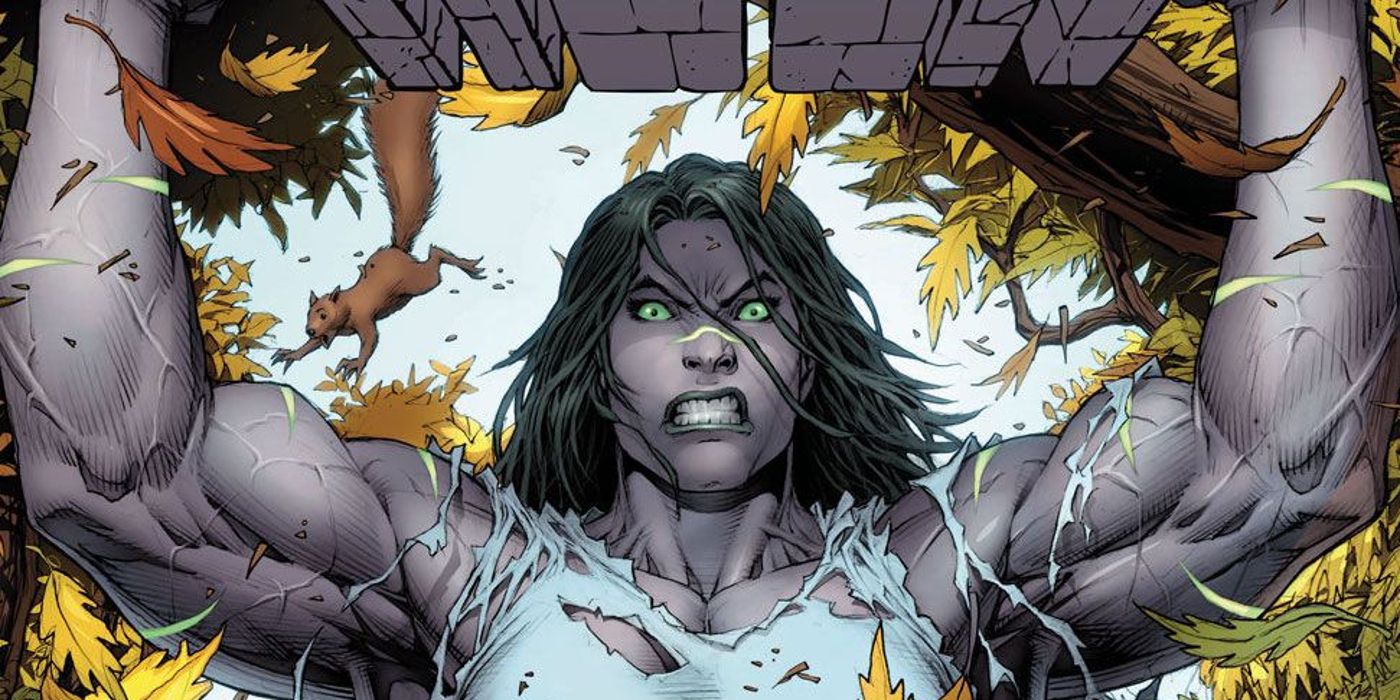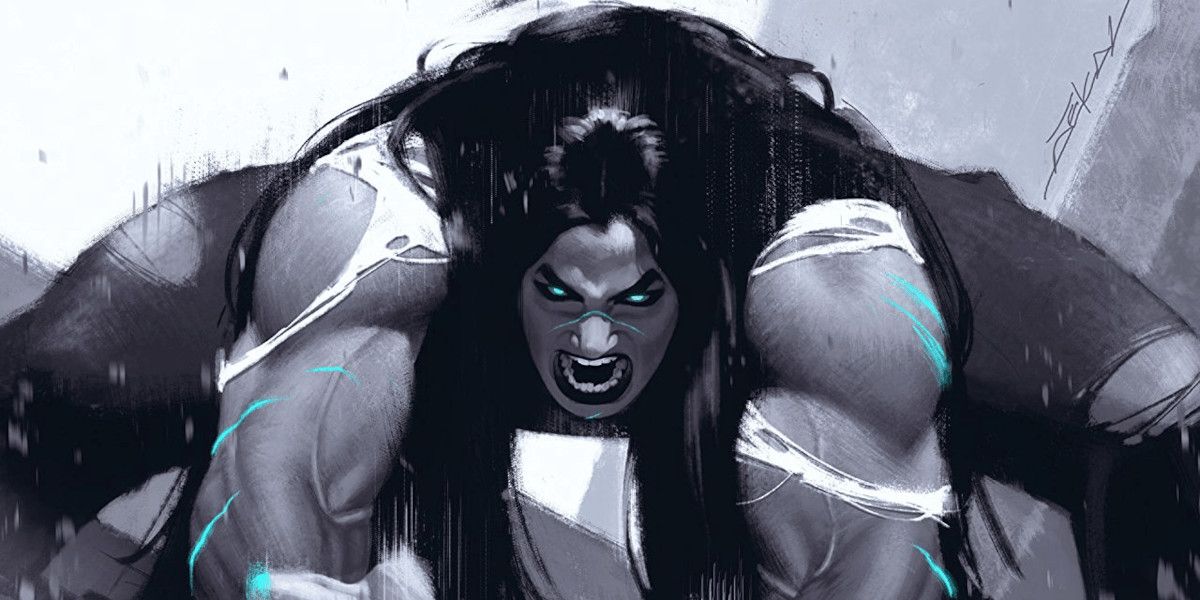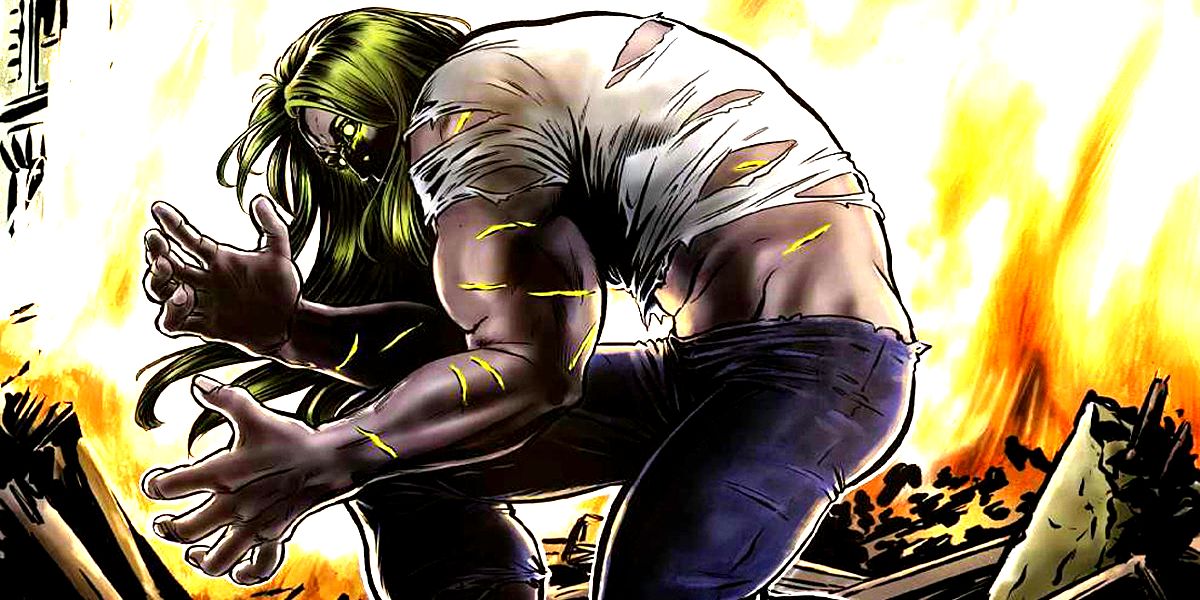No matter if she’s green or grey, She-Hulk is one of the most charismatic heroes around. Originally conceived as ‘Female Hulk,’ the character grew beyond her limitations and found her voice in 1989’s The Sensational She-Hulk (by John Byrne, Bob Wiacek, and Glynis Oliver). For the first time ever, Jennifer Walters took the spotlight away from her cousin, Bruce Banner, showcasing a quick-witted persona that could dominate on the battlefield and win in the court of law. Building on the bedrock of Byrne’s run, Dan Slott and Charles Soule expanded upon Jen’s strengths in the mid-2000s, destroying any doubts that she was the ‘Female Hulk’.
While Slott and Soule’s She-Hulk series garnered praise among many fans and critics, 2017’s Hulk (by Mariko Tamaki, Nico Leon, Dalibor Talajic, Andrew Crossley, and Matt Milla) was a different story. Instead of reflecting the optimism and wit from her previous runs, Mariko Tamaki's Hulk would be a serious affair, pitting Jen against her internal battles with trauma and PTSD. Additionally, Tamaki and Marvel faced criticism for naming the book Hulk instead of She-Hulk. Some fans felt Marvel planned to erase Bruce Banner and replace him with Jennifer Walters. Even though the title returned with issue twelve, the damage had been done. With the barrage of sudden changes, many fans worried that the She-Hulk they loved might disappear.
Tamaki’s run is best known for the creation of the grey version of She-Hulk, a creation that, in the right hands, could foster a wealth of stories for the Disney + series. Grey She-Hulk first appears in issue #6 during a battle with a monstrous foe. As fear wraps its claws around Jen’s psyche, her skin morphs into a horrific grey hue and grants her overwhelming strength and resolve. Jen soon realizes that it was fear -- not rage -- that triggered her transformation. At the heart of her newfound power burns a fierce resistance to being controlled, as Jen uses her fear to swiftly defeat the monster.
The idea of a She-Hulk who is motivated by fear is an interesting concept. Savage Hulk, Banner’s most destructive form, gains power through his anger towards others, but Grey She-Hulk, gains strength by rejecting the idea that she’s trapped. Jen’s grey form is much more interesting than Banner’s Savage Hulk because it’s a more detailed and in-depth look into her psyche. Paired with her PTSD, Jen’s transformation reveals how her inner trauma and her outer monster connect. The Disney + series can visit Tamaki’s creation by highlighting how fear -- not anger -- might be the most dangerous monster of all.
Not all superhero stories need to be peppy and full of life; but, for a hero like Jen Walters, the morose tone of Tamaki’s tale is a poor fit. Everything resembling her from the past has vanished, leaving readers longing for a character that no longer exists. Writers should explore PTSD and trauma in comic books, but Jen’s journey -- which is only partially resolved by the final issue -- is one that splinters her former self. Naturally, fans did not want to read about a She-Hulk who is, well, no longer She-Hulk. In this vein, Tamaki’s run dampens what makes Jennifer Walters so endearing and, instead, presents a new version of the character who feels out of place.
Mariko Tamaki’s Hulk took a swing at a new version of She-Hulk and didn’t hit it out of the park. The drastic reinvention of Jen Walters, the darker tone, and the willingness to break tradition just didn’t sit well with most fans. However, if the Disney + series is any sign, Tamaki’s run can still influence the hero today. Through a more inclusive -- and realistic -- take on Jen’s struggles as a woman and a willingness to flesh out her inner world, She-Hulk: Attorney at Law proves that Tamaki’s series can reverberate with fans and new viewers alike.



